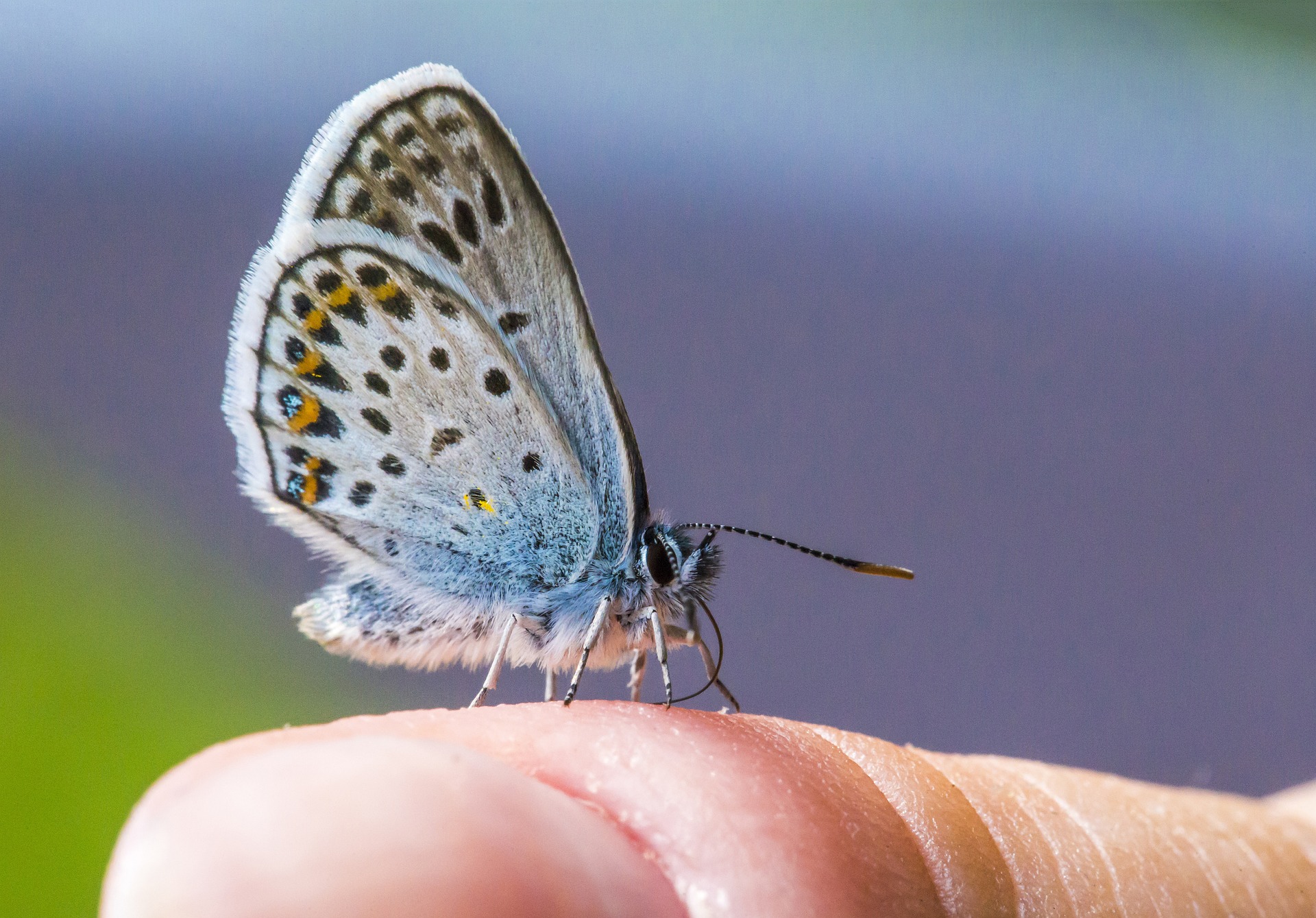The Common Blue, scientifically known as Polyommatus icarus, is one of the most widespread and familiar butterflies in Europe. Here are some key features and characteristics of the Common Blue:
- Appearance:
- Males: The upper side of male Common Blue butterflies is a bright, iridescent blue with thin black margins and a white fringe along the edges of the wings.
- Females: Females have a more varied appearance, usually brown with orange spots near the edges of the wings, and some may have a hint of blue scaling near the body.
- Underside: Both sexes have a pale brown underside with numerous small black spots and a row of orange spots along the edge of the wings.
- Habitat:
- The Common Blue is found in a variety of habitats including grasslands, meadows, heathlands, road verges, gardens, and urban parks.
- They prefer areas with plenty of wildflowers, particularly legumes which are the primary food source for their larvae.
- Distribution:
- This species is widespread throughout Europe, extending into Asia and North Africa. They are also found in parts of the Middle East.
- The Common Blue is one of the most widely distributed and abundant butterflies in its range.
- Lifecycle:
- Eggs: Females lay their eggs singly on the leaves, stems, or flowers of the host plants, primarily legumes such as clovers (Trifolium), bird’s-foot trefoil (Lotus corniculatus), and restharrow (Ononis).
- Larvae: The caterpillars are small and green with a darker dorsal stripe and pale lateral lines. They feed on the host plant leaves and are sometimes attended by ants that provide protection in exchange for sugary secretions from the larvae.
- Pupae: Pupation occurs on the ground or in leaf litter. The pupae are brown and well-camouflaged.
- Adults: The adults emerge from the pupae and are typically seen from late spring to early autumn, with two or more generations per year depending on the climate.
- Behavior:
- Common Blues are active and agile flyers, often seen fluttering low to the ground in search of nectar and mates.
- They are often found basking with their wings open in sunny spots, especially in the morning to warm up.
- Diet:
- Larvae: The caterpillars primarily feed on the leaves of leguminous plants.
- Adults: The adult butterflies feed on nectar from a variety of wildflowers including knapweed (Centaurea), buttercups (Ranunculus), and thistles (Cirsium).
- Conservation Status:
- The Common Blue is currently not considered at risk and is classified as Least Concern by the IUCN.
- Despite being widespread and abundant, local populations can be affected by habitat loss and agricultural practices that reduce the availability of host plants.
- Interesting Facts:
- The Common Blue has a close association with ants during its larval stage. The ants protect the caterpillars from predators and parasites in exchange for a sweet substance produced by the caterpillars.
- The coloration of females can vary significantly, with some populations having females that are almost as blue as males, while others are predominantly brown.
In summary, the Common Blue (Polyommatus icarus) is a vibrant and widespread butterfly found in various habitats across Europe, Asia, and North Africa. Known for the striking blue coloration of the males and the variable appearance of the females, it is a common sight in meadows and grasslands. Its lifecycle, involving a close relationship with leguminous host plants and ants, contributes to its success and abundance in its range.
Views: 8
Subscribe to the newsletter:
